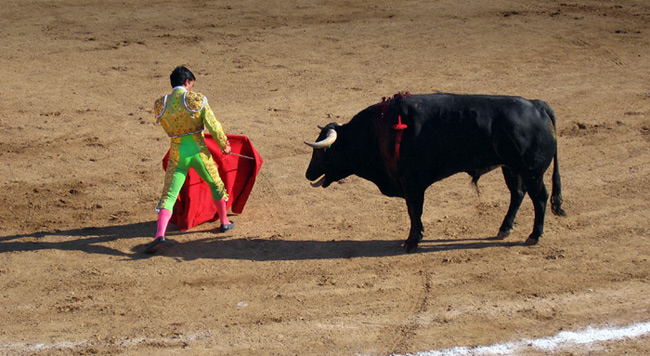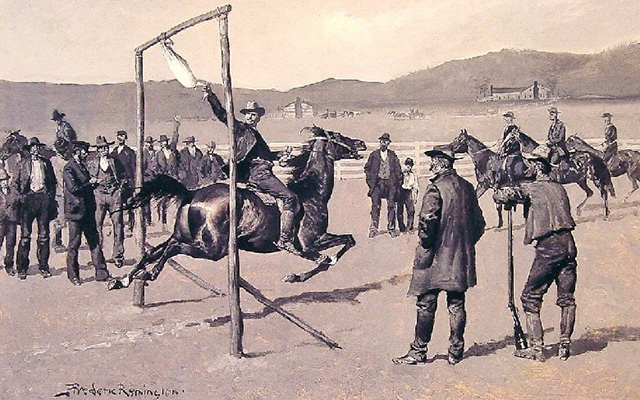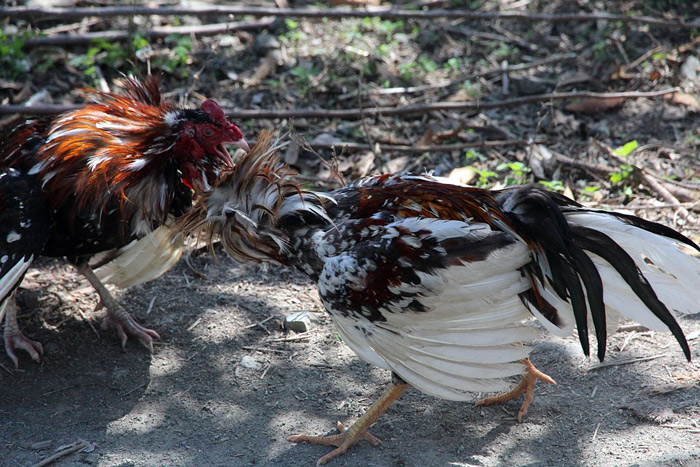The sports of fox-tossing, rat-baiting, goose-pulling - do they sound familiar? Possibly not as they are 'blood sports', a largely forgotten part of the history of sports. A blood sport is a sport or contest involving animal bloodshed.
 A matador confronts a bull in Mexico
A matador confronts a bull in MexicoBloods sports mostly originated around the 16th to 17th century and some of them (the most popular probably being bullfighting) are still being practiced today. These sports are now being referred to as 'highly unacceptable' and there are many trying to be put to a stop to after over 350 years.
Interestingly enough, around the 17th century when the sports originated, the 'blood' in 'blood sports' was not referring to the animals' blood, but actually the people who were allowed to practice the sports, which then were people with royal blood. Later on, around the mid-18th century the blood started meaning the animals' blood, because it was not only royalty that played the sports, due to the increase in popularity.
One popular example of a blood sport was fox-tossing, a competitive European blood sport played during the 17th and 18th century. It was particularly popular for mixed couples, mainly because of the rivalry between all the different couples. Fox tossing would take place in an arena, usually either created by setting up a circle of canvas screens in the open or by using the courtyard of a castle or palace.
The aim of the game was very basic, throw the fox (or any other animal) higher than your opponent. The fox was tossed by using slings with a person on each end to catapult the fox upwards. To give you an idea of how high competitors could throw, the very best got their fox to around 7.5 metres (24 feet) above the ground. That is an extremely good score considering that the average fox weighed around 8 kg.
Fox tossing was often played by royalty and one of the most famous fox tossing contests was held in Dresden hosted by Augustus II the Strong, the King of Poland and the Elector of Saxony, in which 647 foxes, 533 hares, 34 badgers and 21 wildcats were thrown and killed. Fox tossing was definitely not without risk to the competitors as the scared-to-death animals often turned on their opponents. Wildcats were particularly dangerous, as one writer remarked, they “do not give a pleasing kind of sport, for if they cannot bury their claws and teeth in the faces or legs of the tossers, they cling to the tossing-slings for dear life, and it is next to impossible to give one of these animals a skilful toss." Overall fox tossing was quite a gruesome blood sport especially for the animals but also for the participants as well.
 A variation of goose pulling is still practiced today
A variation of goose pulling is still practiced todayAnother example of a blood sport is goose pulling, a fairly well-known blood sport practiced in the Netherlands, England, parts of North America and Belgium from the 17th to 19th centuries. The sport involved fastening a live goose with a well-greased head to a rope or pole that was stretched across a road. A man riding on horseback at a full gallop would try to grab the bird by the neck in order to pull the head off. It is still practised today, using a dead goose, in parts of Belgium and in Grevenbicht, Netherlands as part of Shrove Tuesday and in some towns in Germany as part of the Shrove Monday celebrations.
Philip Parsons, writing in 1771 described how it was played in England. "In the Northern parts of England it is no unusual diversion to tie a rope across a street and let it swing about the distance of ten yards from the ground. To the middle of this a living cock is tied by the legs. As he swings in the air, a set of young people ride one after another, full speed, under the rope, and rising in the stirrups, catch at the animal's head, which is close clipped and well soaped, in order to elude the grasp. Now he who is able to keep his seat in his saddle, and his hold of the bird's head, so as to carry it off in his hand, bears away the palm, and becomes the noble hero of the day."
The sport was challenging, as the oiling of the goose's neck made it difficult to retain a grip on it, and the bird's flailing made it difficult to target in the first place. Sometimes the organizers would make it even more difficult. One writer describing an event in the American South witnessed someone "with a long whip in hand ... stationed on a stump, about two rods (10 metres) from the gander, with orders to strike the horse of the puller as he passed by."
Many riders missed altogether; others broke the goose's neck without snapping off the head. The American poet and novelist William Gilmore Simms wrote that "it is only the experienced horseman, and the experienced sportsman, who can possibly succeed in the endeavour. Young beginners, who look on the achievement as rather easy, are constantly baffled; many find it impossible to keep the track; many lose the saddle, and even where they succeed in passing beneath the saplings without disaster, they either fail altogether in grasping the goose, which keeps a constant fluttering and screaming; or, they find it impossible to retain their grasp, at full speed, upon the greasy and eel-like neck and head which they have seized."
 cock-fighting in Bali, Indonesia
cock-fighting in Bali, IndonesiaThe prizes of a goose-pulling contest were quite small, often the dead bird itself, other times contributions from the audience or rounds of drinks. The main draw of such contests for the spectators was the betting on the competitors, sometimes for money or more often for alcoholic drinks.
Overall, goose pulling was one of the less popular blood sports, but surprisingly, still carried on to this day. Almost always the goose was killed, but fox tossing still had more animals die, due to its popularity.
In conclusion, these two examples illustrate how these gruesome blood sports were popular across many countries and at all levels of society, for several hundreds of years. Nowadays, the few blood sports that are still being played are held by most people to be extremely unacceptable and there are moves to put a stop to them.
Related Pages
- List of Blood Sports
- About Hunting
- Ancient Sports
- Complete List of Sports
- Animals and the Olympic Games
- Unusual Sports that are cruel to animals


 Current Events
Current Events